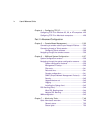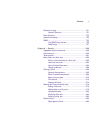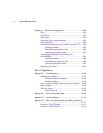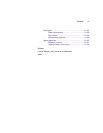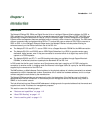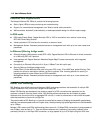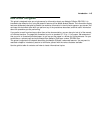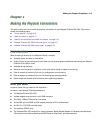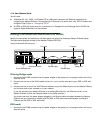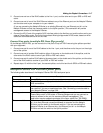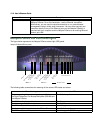
1-12 User’s Reference Guide
FF
FF
ee
ee
aa
aa
tt
tt
uu
uu
rr
rr
ee
ee
ss
ss
aa
aa
nn
nn
dd
dd
cc
cc
aa
aa
pp
pp
aa
aa
bb
bb
ii
ii
ll
ll
ii
ii
tt
tt
ii
ii
ee
ee
ss
ss
The Netopia D-Series DSL DSUs all provide the following features:
■
Status lights (LEDs) for easy monitoring and troubleshooting.
■
Support for console-based management over Telnet or serial cable connection.
■
Wall-mountable, bookshelf (side-stackable), or desktop-stackable design for efficient space usage.
II
II
nn
nn
DD
DD
SS
SS
UU
UU
mm
mm
oo
oo
dd
dd
ee
ee
■
DSU mode (Frame Relay): Copper Mountain DSL to V.35 for connection to an external router using
RFC1490 Frame Relay protocol.
■
Industry-standard V.35 interface for connection to external router.
■
Management Access: Password protected access to management tools with up to four user names and
passwords.
II
II
nn
nn
EE
EE
tt
tt
hh
hh
ee
ee
rr
rr
nn
nn
ee
ee
tt
tt
ff
ff
ii
ii
ll
ll
tt
tt
ee
ee
rr
rr
ii
ii
nn
nn
gg
gg
bb
bb
rr
rr
ii
ii
dd
dd
gg
gg
ee
ee
mm
mm
oo
oo
dd
dd
ee
ee
■
Ethernet bridge or LAN extension mode (RFC 1483): Copper Mountain DSL to Ethernet for direct connection
to a LAN using RFC 1483 protocol.
■
Inter-operates with Copper Mountain Networks Copper Edge™ access concentrator with integrated
management.
■
Connectivity to Ethernet LANs via built-in 8 port 10Base-T hub with uplink port.
■
Security Features (Intelligent bridge mode):
Packet Filters (8 user definable filter sets using up to 255 rules): IP and MAC layer packet filtering; Filter
packets on source or destination address, service or protocol; filter incoming packets for security, or
outgoing packets for more efficient use of DSL bandwidth.
Management Access: Password protected access to management tools with up to 4 user names and
passwords.
AA
AA
bb
bb
oo
oo
uu
uu
tt
tt
DD
DD
SS
SS
LL
LL
BB
BB
oo
oo
nn
nn
dd
dd
ii
ii
nn
nn
gg
gg
DSL Bonding, also called inverse multiplexing or IMUX, technology
combines the
bandwidth of multiple DSL
(Digital Subscriber Line) circuits into a single virtual data pipe.
Before DSL Bonding was developed, the maximum speed of a DSL connection was dependent on the
customer's distance from the central office. DSL Bonding allows customers who are located at greater
distances from the central office to aggregate DSL circuits, in order to achieve two or more times the speed
otherwise available to them with a single line.
The premise behind DSL Bonding is to provide a cost-effective means of bridging the bandwidth gap between
relatively low network speeds and much higher rates, thereby allowing high-speed applications to use bandwidth
up to 3 Mbps.
Netopia's DSL routers and DSUs with bonding allow users with 1.5 Mbps SDSL connections to enjoy speeds of
over 3 Mbps, twice as fast as T1. They also allow customers who, because of line quality problems, were
previously limited to a 144 Kbps IDSL connection, to enjoy speeds of up to 576 Kbps using four IDSL lines.



